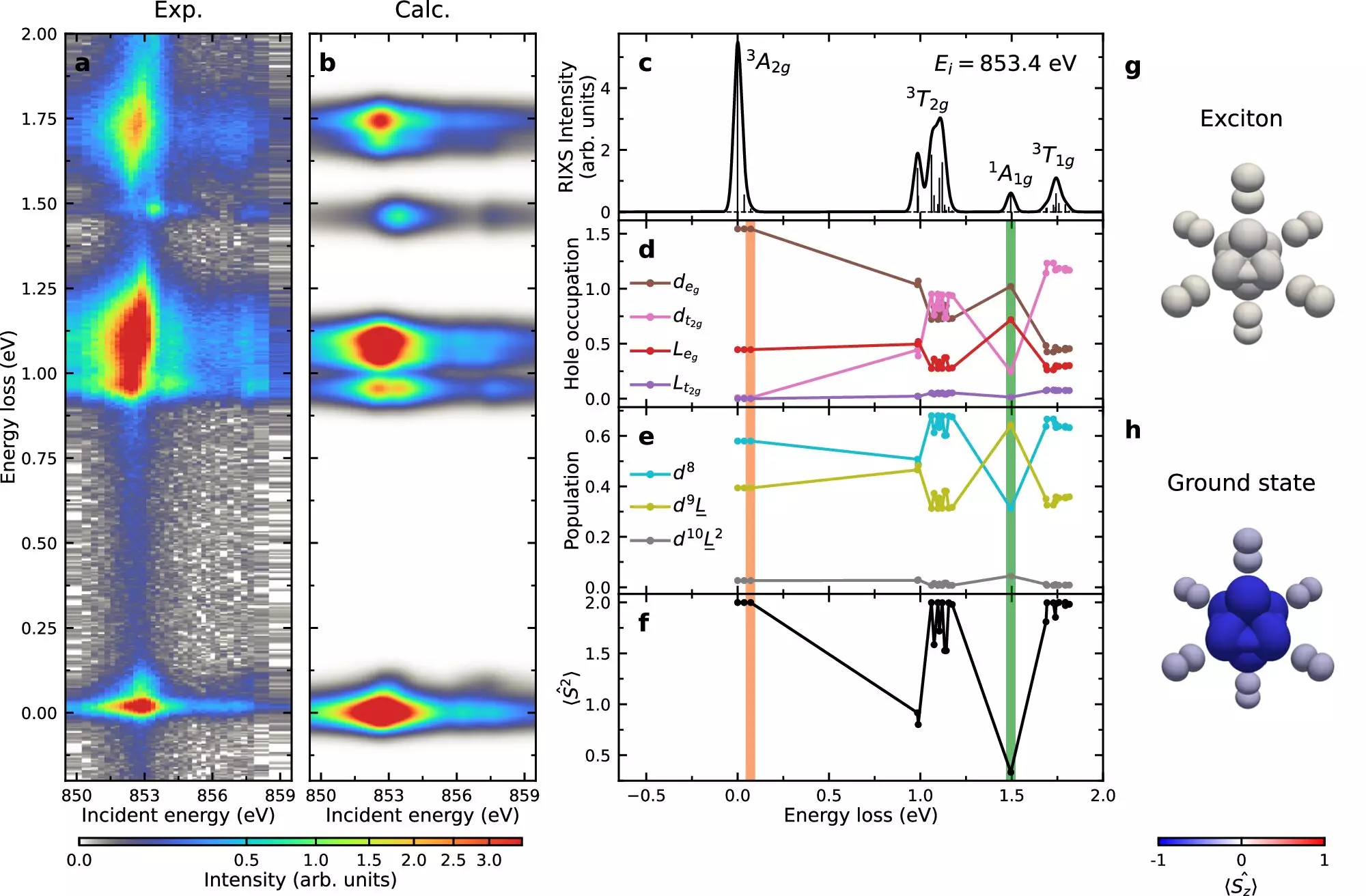Research within the realm of condensed matter physics is continually revealing new phenomena that challenge our understanding of materials at the atomic level. Recently, a scientific team out of the U.S. Department of Energy’s (DOE) Brookhaven National Laboratory has unfolded a remarkable narrative surrounding “excitons,” which are mobile, particle-like entities pivotal to both optical and magnetic properties in a significant class of materials known as van der Waals magnets, exemplified by nickel phosphorus trisulfide (NiPS3). By analyzing the interaction between excitons and the underlying magnetic structures of these materials, researchers are paving the way for innovations in technology that could revolutionize information storage and other applications.
The Role of Excitons in Material Properties
Excitons are fascinating particles created by the binding of an electron and a “hole”—a vacant spot within a crystal structure that mimics a positive charge. This coupling allows excitons to move through materials as a cohesive unit, influencing their electronic properties. The recent study focusing on NiPS3 is particularly intriguing because it underscores a possible interaction between excitons and the magnetic configurations of the material, raising questions about whether scientists can harness this interaction to manipulate excitons with magnetic fields. Researchers have been striving to elucidate the behavior and configuration of excitons in such materials, yet the intricate relationship has proved challenging until now.
The breakthrough in understanding excitons in NiPS3 is attributed to an innovative technique known as resonant inelastic X-ray scattering (RIXS), utilized at Brookhaven’s National Synchrotron Light Source II (NSLS-II). This facility is known for producing exceptionally bright X-ray beams capable of detailed analysis of various materials. The RIXS methodology allows scientists to bombard the material with X-ray photons, which scatter in myriad directions upon interaction with electrons. By capturing and analyzing these scattered photons with unparalleled precision, scientists can reverse-engineer the data to derive insights into the properties of excitons within the crystal lattice.
Brookhaven physicist Mark Dean, one of the key authors of the study, emphasized the importance of addressing fundamental questions about the nature of excitons and their relationship with magnetic properties. This pursuit represents a milestone in material science, as understanding these interactions could lead to controlled manipulation of optical properties through magnetic fields.
The researchers’ findings reveal that the formation and movement of excitons in NiPS3 is heavily influenced by the Hund’s exchange interaction, a principle that determines the energy involved in different electron spin configurations within the material. Remarkably, this understanding of exciton dynamics correlates them with spin disturbances, specifically a quasiparticle known as a “double-magnon.” Magnons represent collective excitations of electron spins within the lattice structure, highlighting the integral connection between electronic and magnetic properties in van der Waals materials.
The discoveries present an exciting narrative for future studies. Wei He, the study’s first author, articulated hopes for even more precise measurements of NiPS3 as advancements in instrumentation and methodologies such as RIXS and electron microscopy evolve.
Implications for Future Technologies
The implications of these findings stretch far beyond basic scientific inquiry. The potential to manipulate excitons through magnetic means suggests opportunities for emerging technologies. Specifically, advancements in magnetism-driven technologies could lead to more efficient information storage systems, offering new avenues for both consumer electronics and large-scale data management. Additionally, as researchers gain a deeper understanding of the relationships between excitons, magnons, and the structural properties of these materials, the doorway to innovative applications in spintronics and quantum computing may slowly begin to open.
The work conducted by the Brookhaven National Laboratory team represents a significant advancement in the exploration of excitons within van der Waals magnets. As scientific techniques continue to develop, our understanding of these enigmatic particles and their interactions with magnetic fields will likely unveil a host of new technological possibilities. The journey into the microscopic world of excitons is just beginning, and its potential impact could stretch into numerous realms of modern-day applications.

